Shielding Effectiveness Analysis and Modification of the Coupling Effect Transmission Line Method on Cavities with Multi-Sided Apertures
Abstract
:1. Introduction
2. Shielding Effectiveness of Single Side Aperture Cavities
3. Multi-Sided Aperture Cavity Equivalent Transmission Line Extension Model
3.1. Vector Analysis of the Coupling Effect
3.2. The Calculation Model of the Shielding Effectiveness
4. Model Verification
4.1. Cavity Center Point Shielding Effectiveness Verification
4.2. Model Verification of the Shielding Effectivenesses at Any Position in the Cavity
5. Analysis of the Shielding Effectiveness of a Multi-Sided Aperture Cavity
5.1. Influence of the Azimuth Angle of the Incident Wave on the Shielding Effectiveness
5.2. Influence of the Number of Apertures on the Shielding Effectiveness
5.3. Influence of Cavity Size on the Shield Effectiveness
6. Conclusions
Author Contributions
Conflicts of Interest
References
- Shanghe, L.; Weidong, L. Progress of relevant research on electromagnetic compatibility and electromagnetic protection. High Volt. Eng. 2014, 40, 1605–1613. [Google Scholar]
- Kai, L.; Guanghui, W.; Xiaodong, P.A.N. Research of the shielding effectiveness of a rectangular metallic enclosure with an aperture. J. Microw. 2013, 29, 48–52. [Google Scholar]
- Wallyn, W.; De Zutter, D.; Laermans, E. Fast shielding effectiveness prediction for realistic rectangular enclosures. IEEE Trans. Electromagn. Compat. 2003, 40, 639–643. [Google Scholar] [CrossRef]
- Nie, B.L.; Du, P.A.; Yu, Y.T.; Shi, Z. Study of the shielding properties of enclosures with apertures at higher frequencies using the transmission line modeling method. IEEE Trans. Electromagn. Compat. 2011, 53, 73–81. [Google Scholar] [CrossRef]
- Shi, D.; Shen, Y.; Ruan, F.; Wei, Z.; Gao, Y. Shielding analysis of enclosure with aperture irradiated by plane wave with arbitrary incident angle and polarization direction. In Proceedings of the IEEE International Symposium on Electromagnetic Compatibility, Detroit, MI, USA, 18–22 August 2008; pp. 1–5. [Google Scholar]
- Belkacem, F.T.; Bensetti, M.; Boutar, A.G.; Moussaoui, D.; Djennah, M.; Mazari, B. Combined model for shielding effectiveness estimation of a metallic enclosure with apertures. IET Sci. Meas. Technol. 2011, 5, 88–95. [Google Scholar] [CrossRef]
- Robinson, M.P.; Benson, T.M.; Christopoulos, C.; Dawson, J.F.; Ganley, M.D.; Marvin, A.C.; Porter, S.J.; Thomas, D.W. Analytical formulation for the shielding effectiveness of enclosures with apertures. IEEE Trans. Electromagn. Compat. 1998, 40, 240–248. [Google Scholar] [CrossRef]
- Belokour, I.; LoVetri, J.; Kashyap, S. A higher-order mode transmission line model of the shielding effectiveness of enclosures with apertures. In Proceedings of the IEEE International Symposium on Electromagnetic Compatibility, Montreal, QC, Canada, 13–17 August 2001; pp. 702–707. [Google Scholar]
- Azaro, R.; Caorsi, S.; Donelli, M.; Gragnani, G.L. A circuital approach to evaluating the electromagnetic field on rectangular apertures backed by rectangular cavities. IEEE Trans. Microw. Theory Tech. 2002, 50, 2259–2266. [Google Scholar] [CrossRef]
- Poad, F.; Jenu, M.Z.; Christopoulos, C.; Thomas, D.W.P. Multimode consideration in the analysis of shielding effectiveness of a metallic enclosure with off-centred apertures. In Proceedings of the International RF and Microwave Conference, Putra Jaya, Malaysia, 12–14 September 2006; pp. 306–310. [Google Scholar]
- Dehkhoda, P.; Tavakoli, A.; Moini, R. An efficient and reliable shielding effectiveness evaluation of a rectangular enclosure with numerous apertures. IEEE Trans. Electromagn. Compat. 2008, 50, 208–212. [Google Scholar] [CrossRef]
- Han, S.; Jie, C.; Yinggang, L. Analysis of Shielding Effectiveness in Double Layer Rectangular Enclosure with Aperture by Higher-order Mode Transmission Line Method. High Volt. Eng. 2009, 4, 877–883. [Google Scholar]
- Qiang, P.; Dongfang, Z.; Deting, H.; Daojie, Y.; Tao, H.; Liping, W.; Wei, X. Shielding effectiveness analysis of rectangular cavity with aperture by modi-fication and expansion of transmission line method. High Power Laser Part. Beams 2013, 25, 2355–2362. [Google Scholar] [CrossRef]
- Gupta, K.C.; Garg, R.; Bahl, I.J. Microstrip Lines and Slotlines; Artech House: Boston, MA, USA, 1996. [Google Scholar]
- Jongjoo, S.; Gun, K.D.; Hwa, K.J. Circuital Modeling and Measurement of Shielding Effectiveness Against Oblique Incident Plane Wave on Apertures in Multiple Sides of Rectangular Enclosure. IEEE Trans. Electromagn. Compat. 2010, 3, 566–577. [Google Scholar]
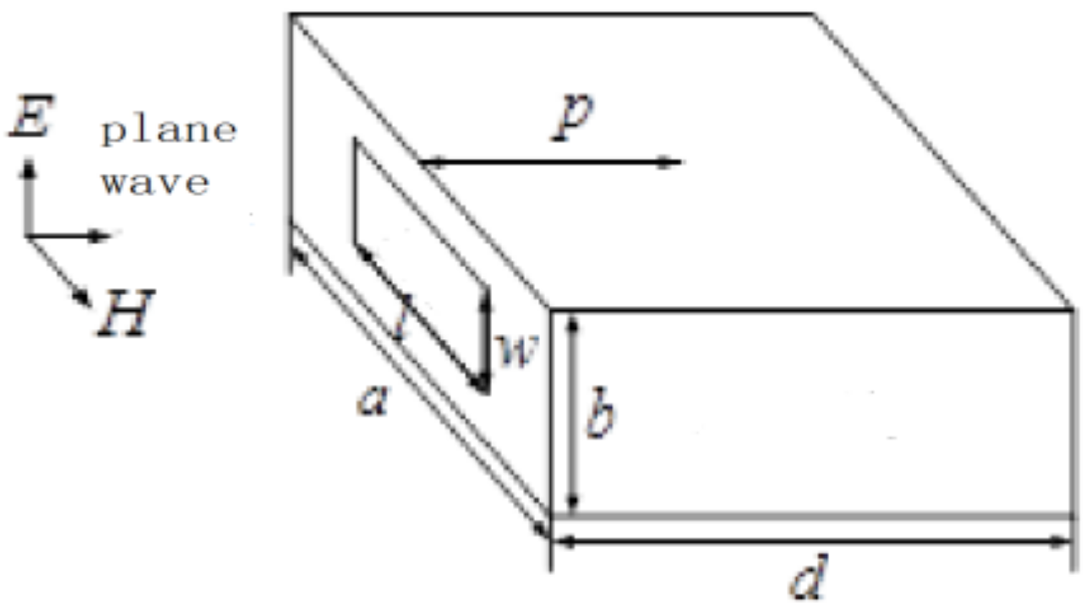
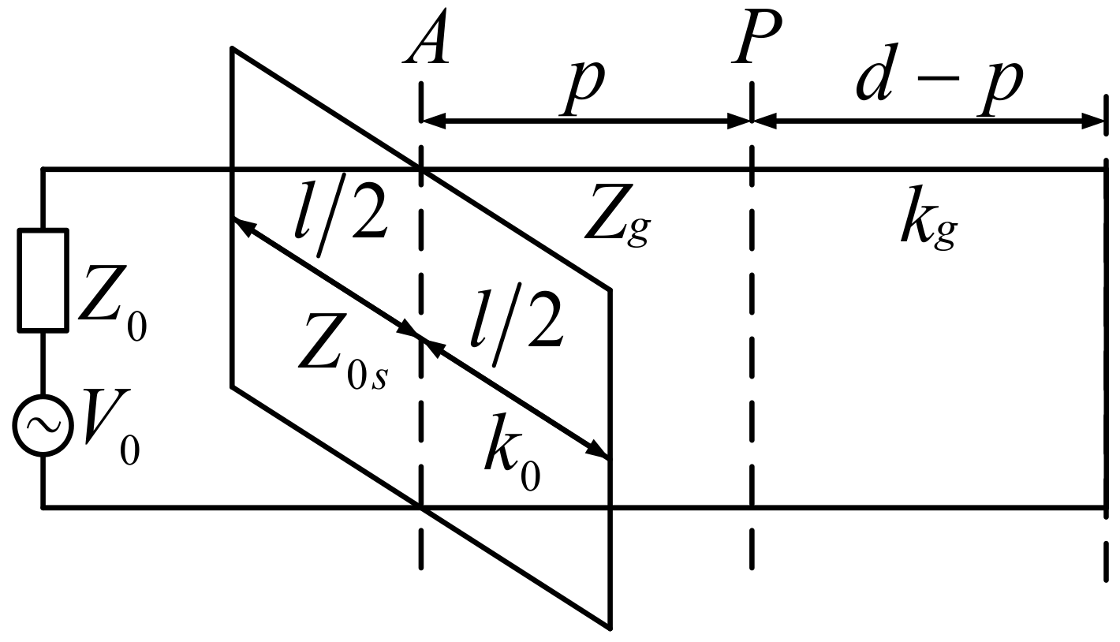


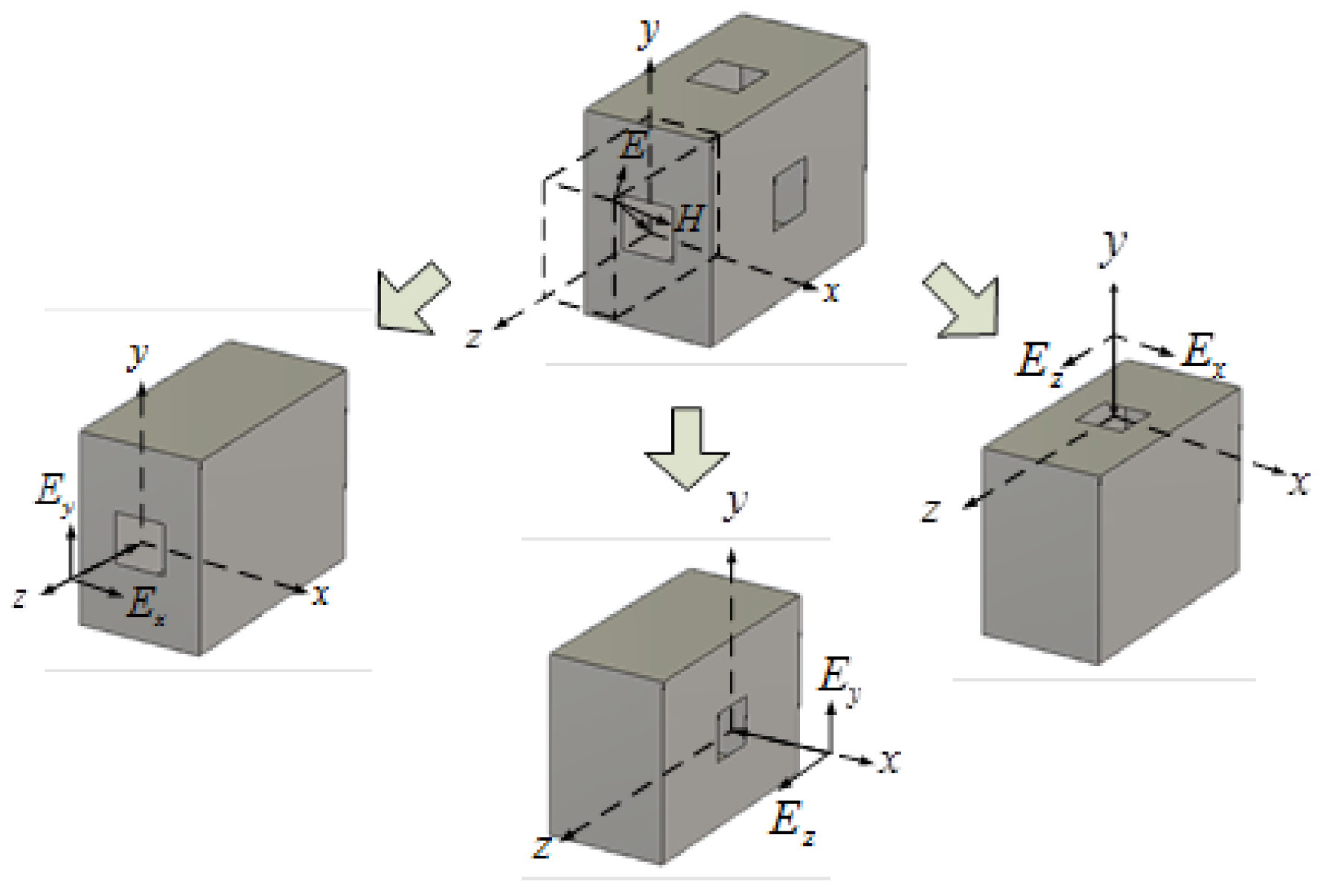
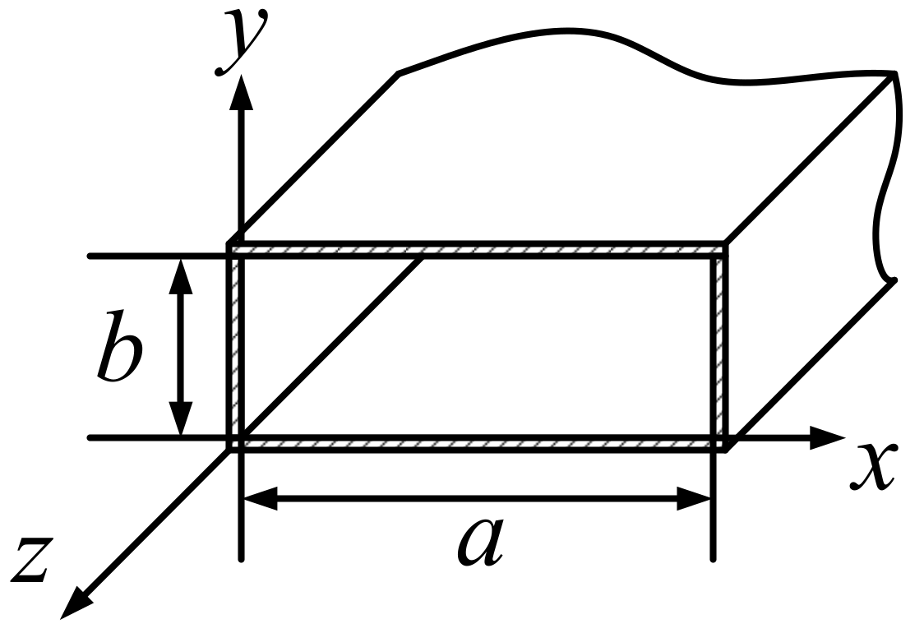
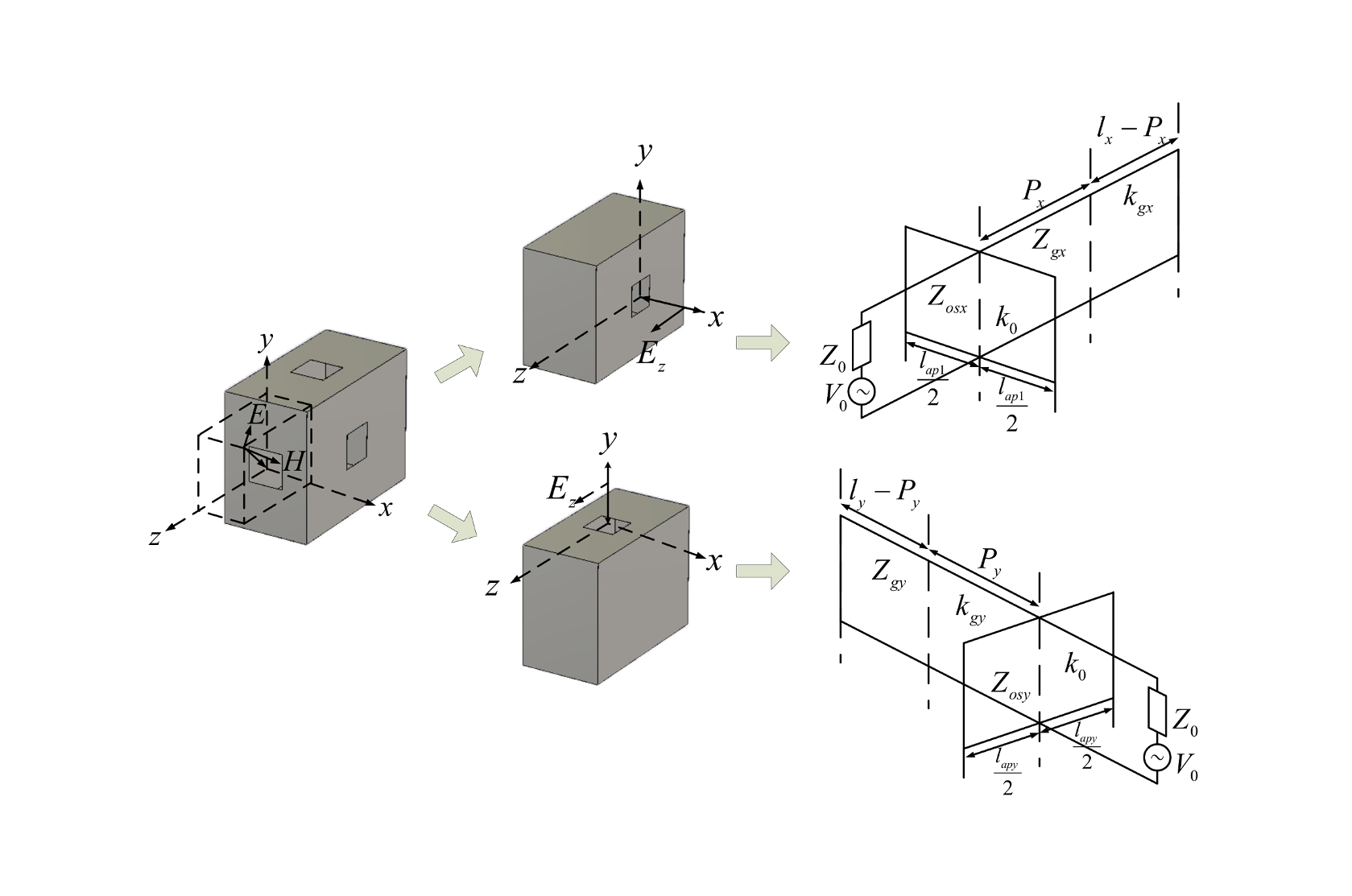
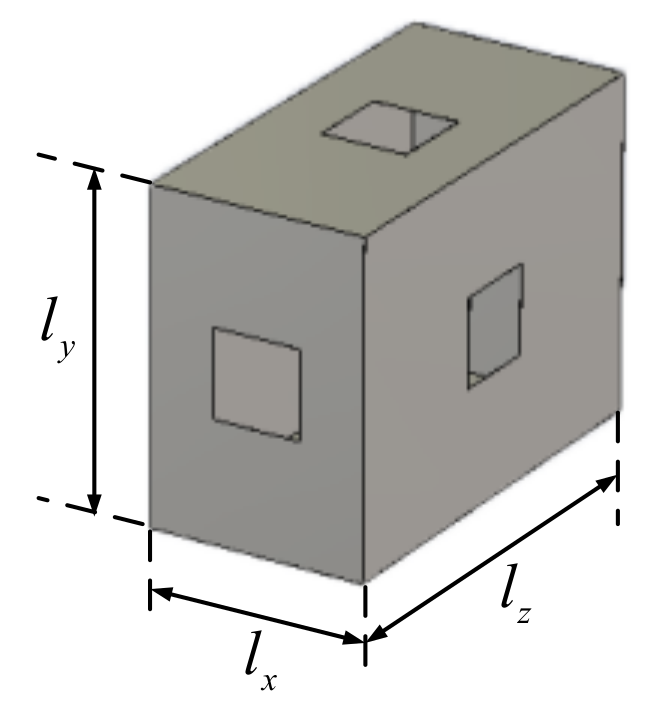
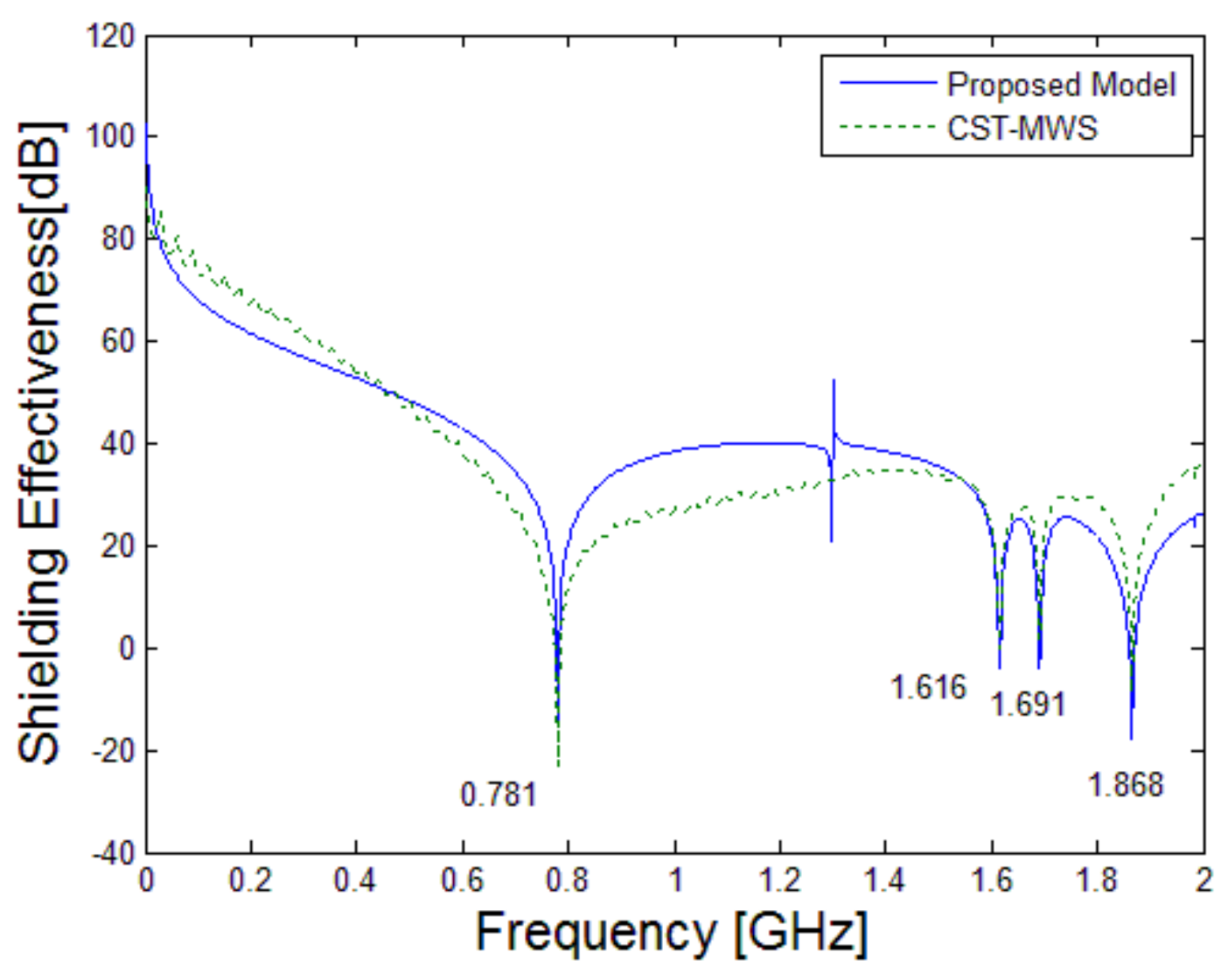

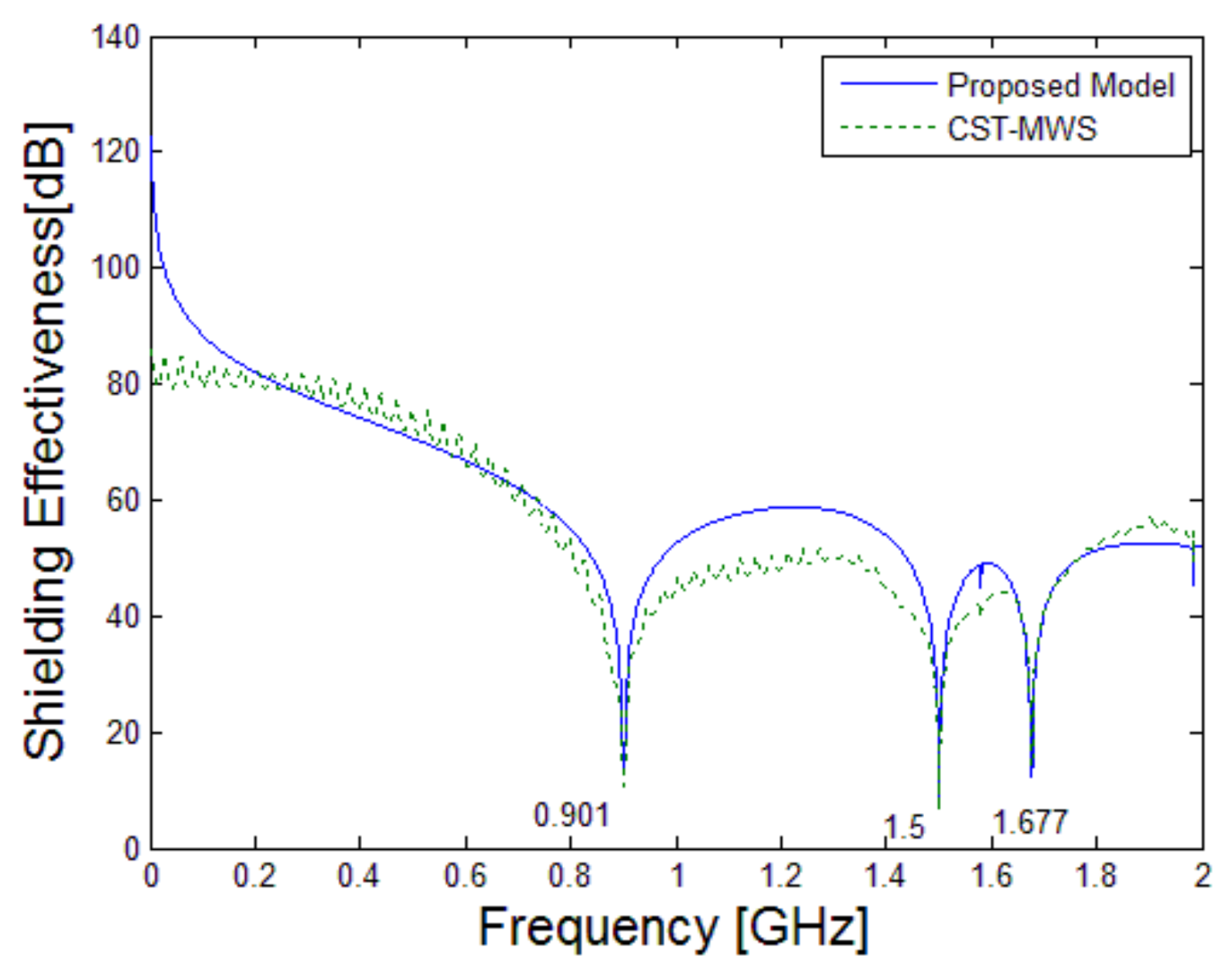
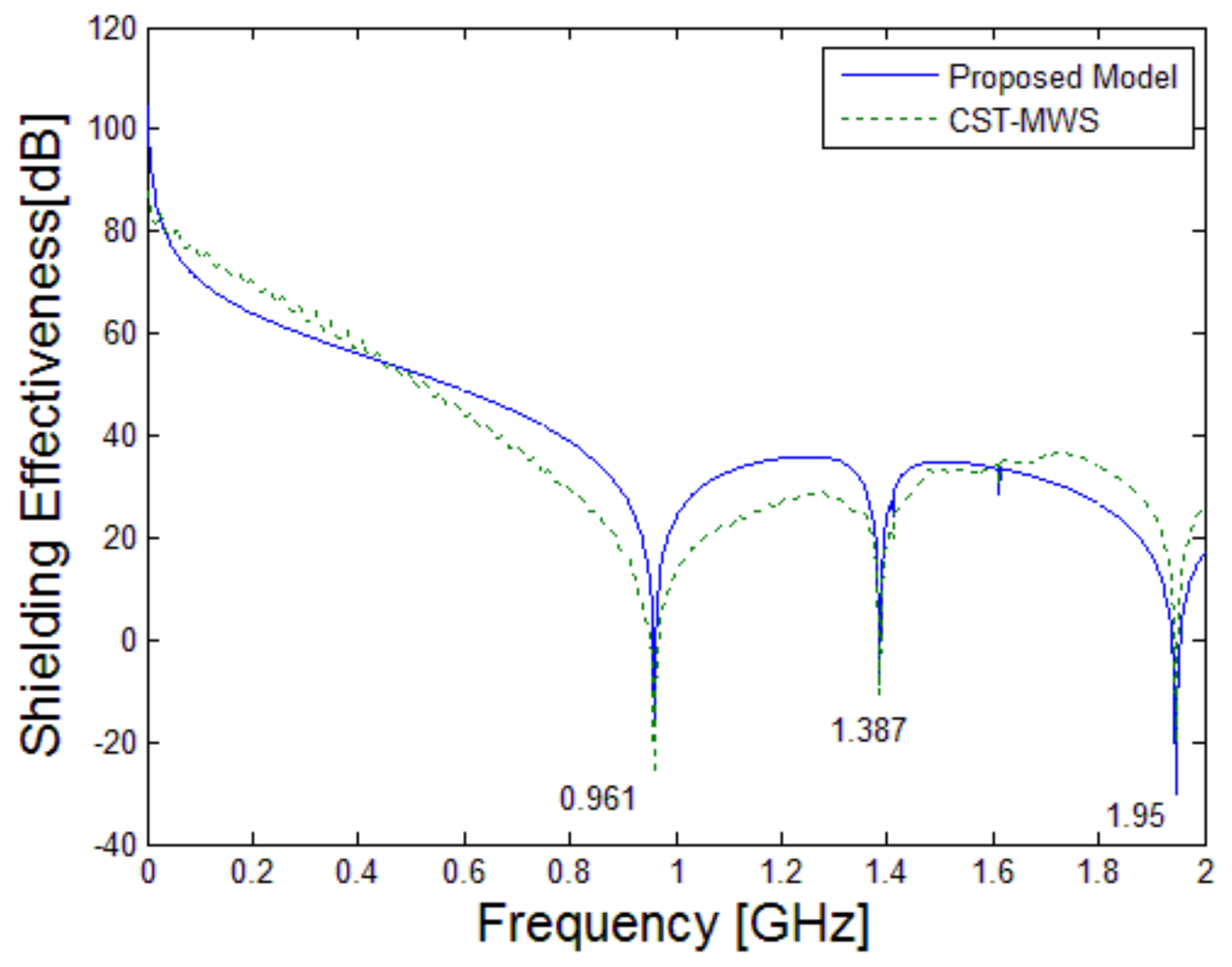
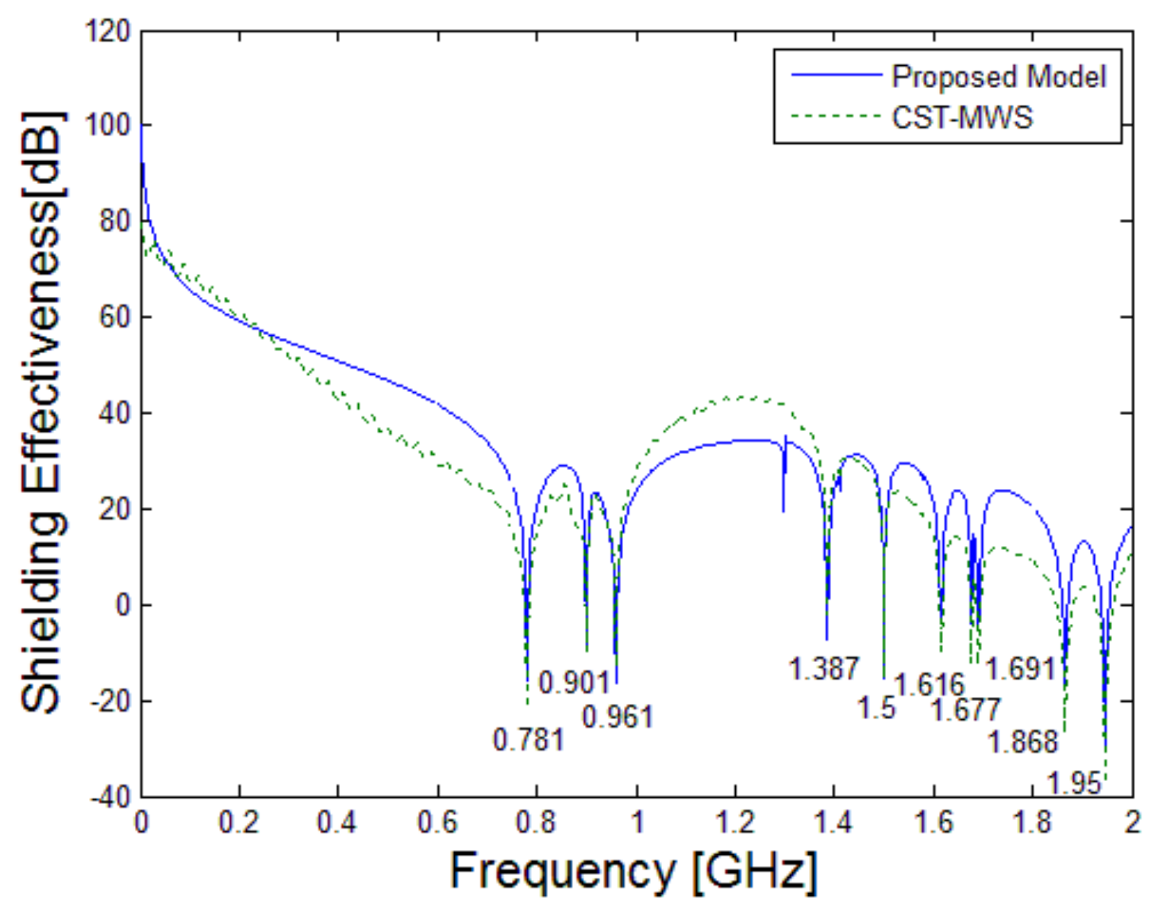
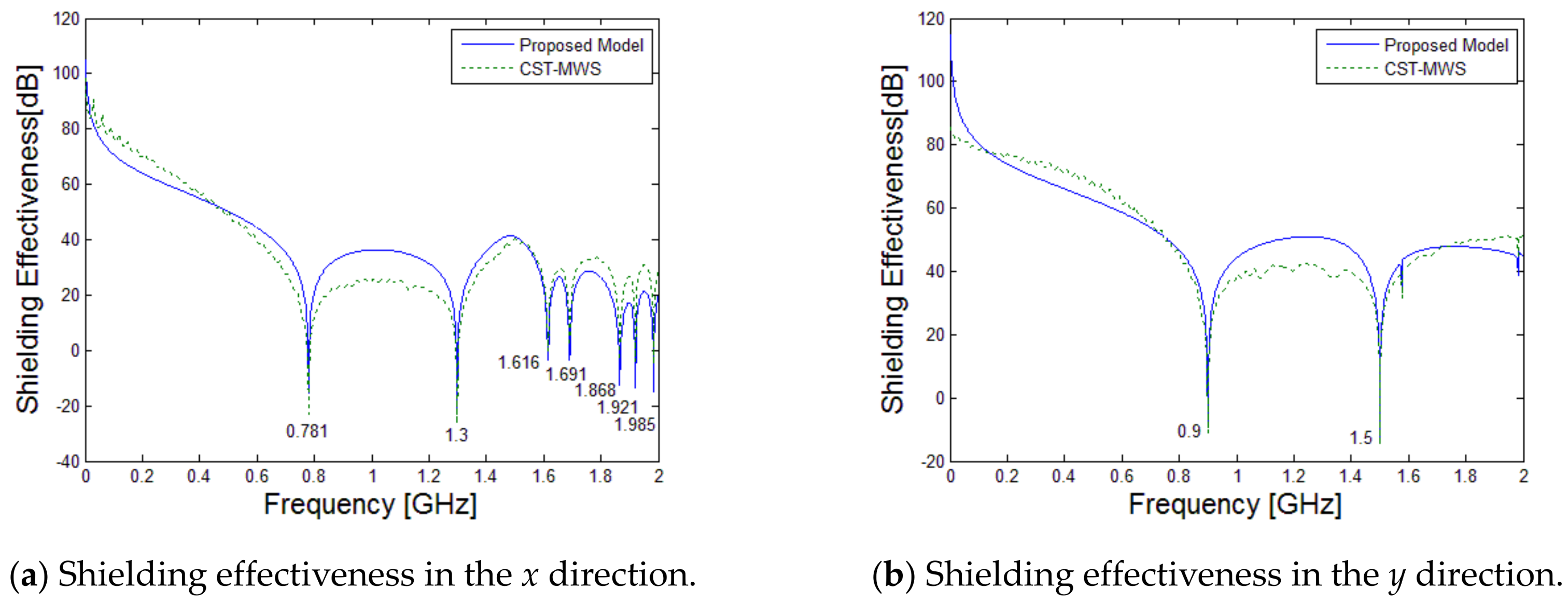
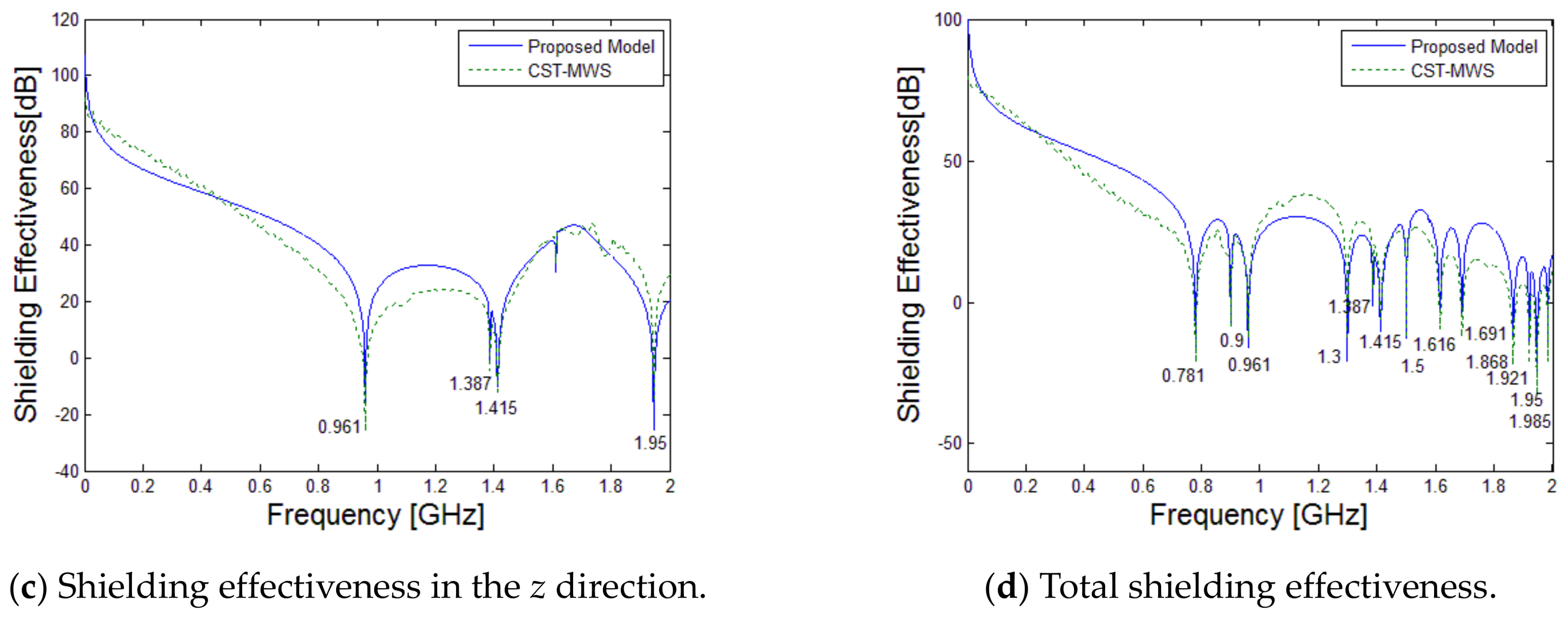
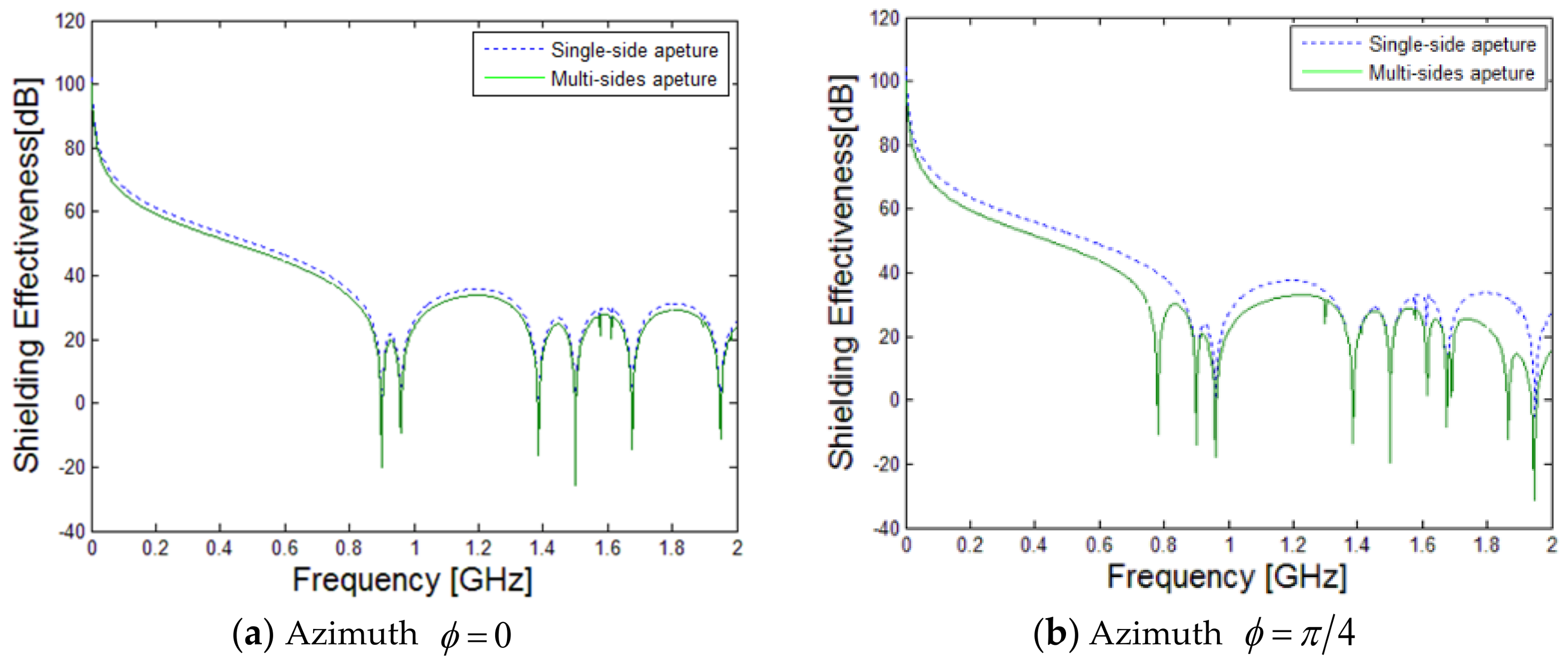
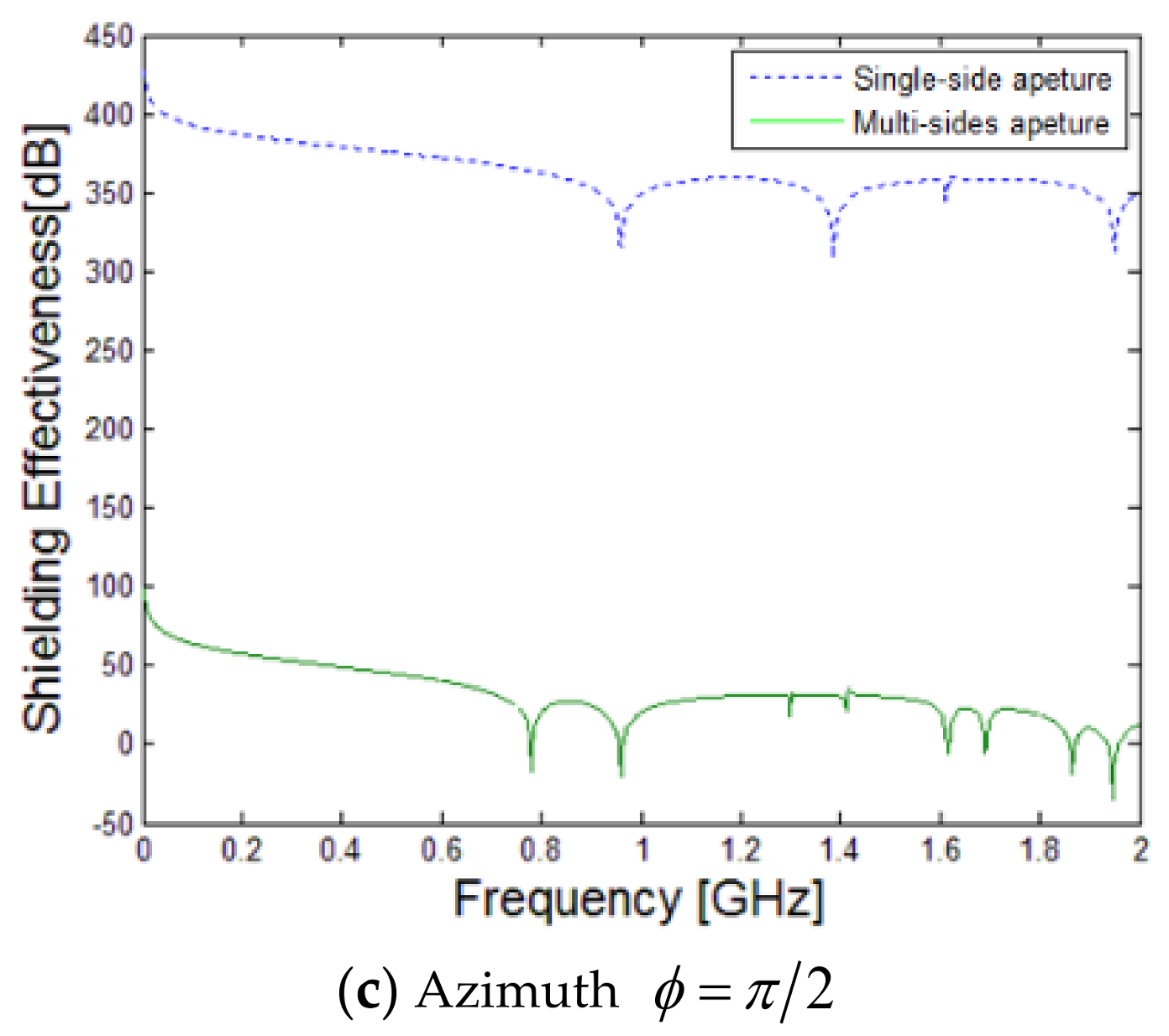

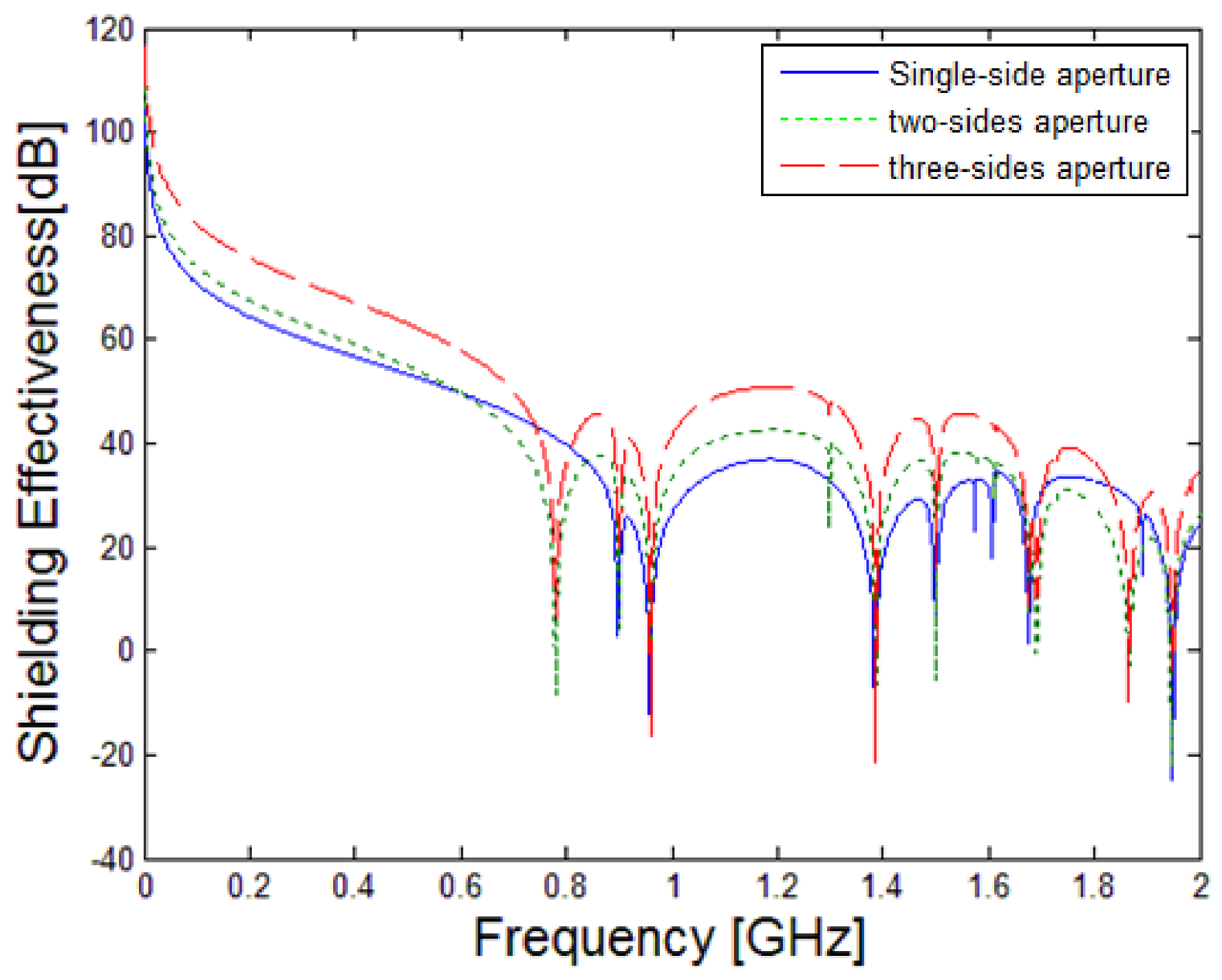
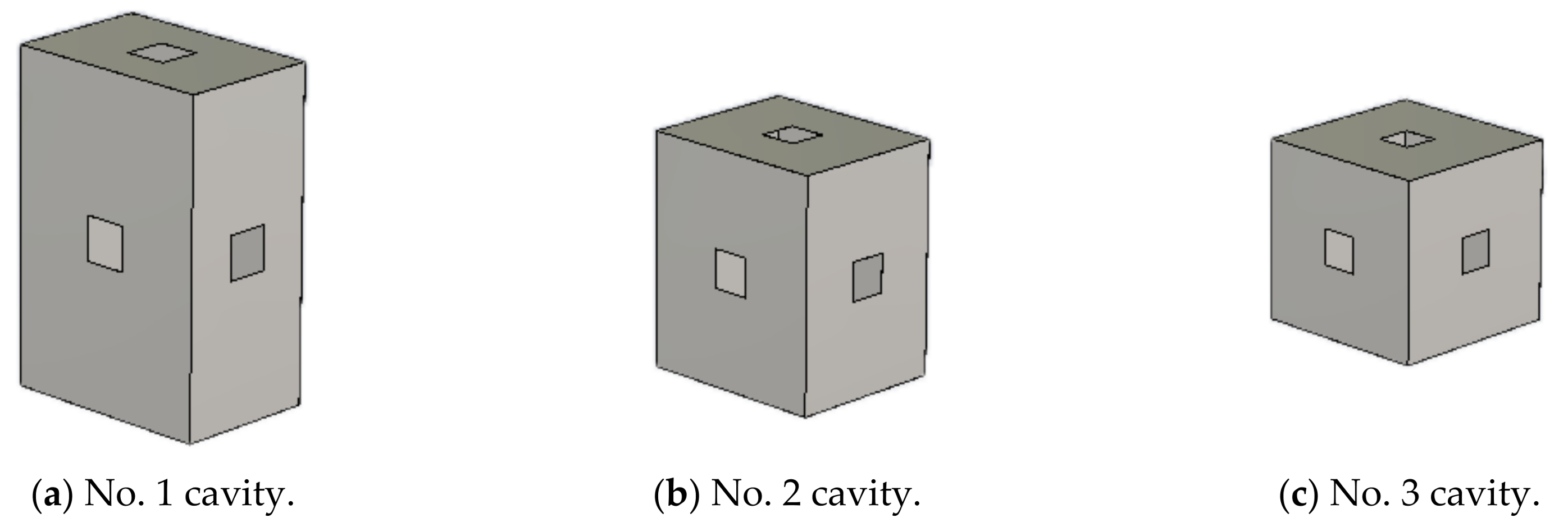
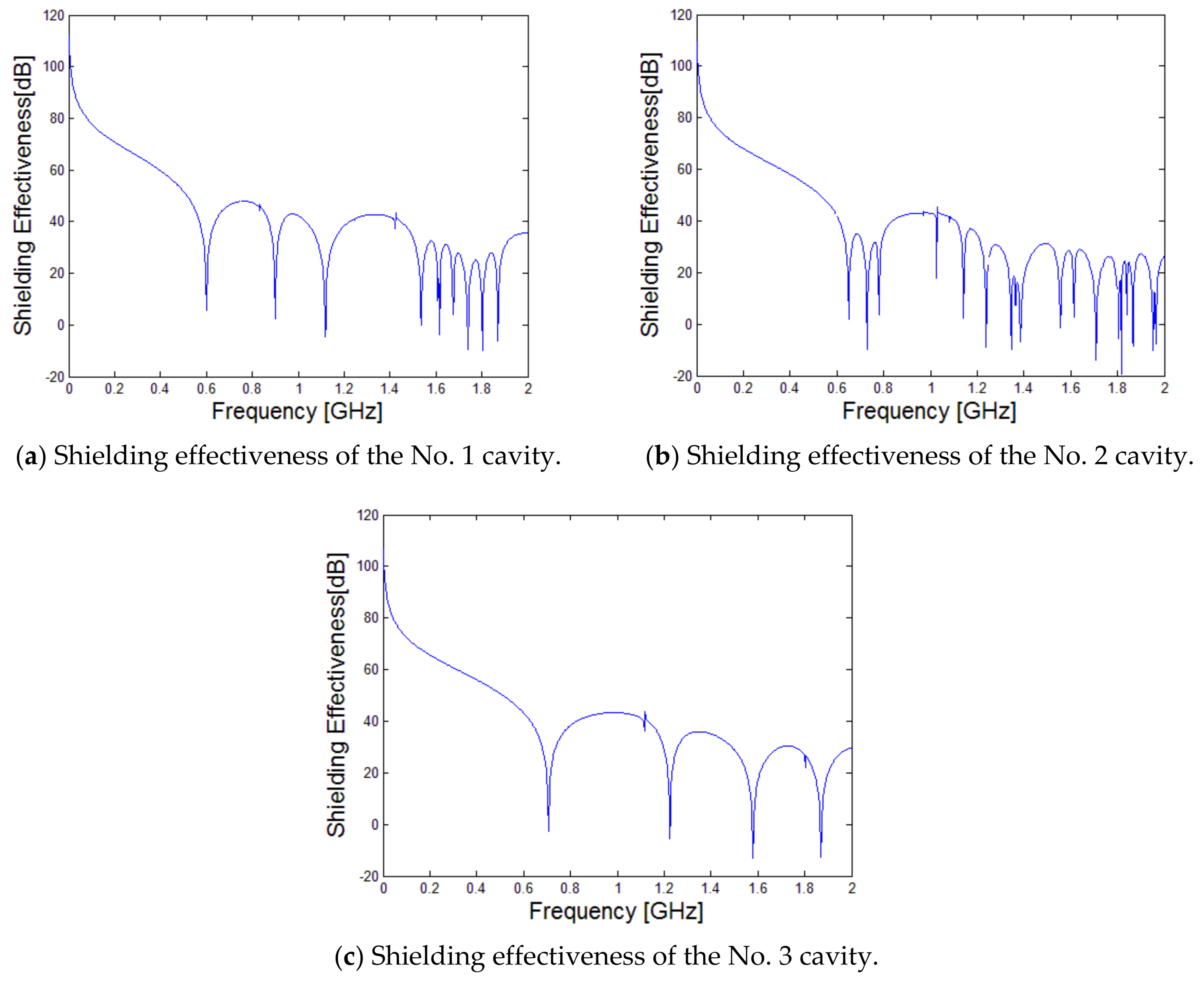
| l = 1 | l = 3 | ||||||||
|---|---|---|---|---|---|---|---|---|---|
| m\n | 0 | 1 | 2 | 3 | m\n | 0 | 1 | 2 | 3 |
| 0 | 0.5000 | 0.7810 | 1.3000 | 1.8682 | 0 | 1.5 | 1.6155 | 1.9209 | 2.3431 |
| 1 | 0.9014 | 1.0828 | 1.5008 | 2.0131 | 1 | 1.6771 | 1.7812 | 2.0622 | 2.4602 |
| 2 | 1.5811 | 1.6912 | 1.9849 | 2.3958 |
| l = 1 | l = 3 | ||||||||
|---|---|---|---|---|---|---|---|---|---|
| m\n | 0 | 1 | 2 | 3 | m\n | 0 | 1 | 2 | 3 |
| 0 | 0.5000 | 0.781 | 1.3000 | 1.8682 | 0 | 1.5 | 1.6155 | 1.9209 | 2.3431 |
| 1 | 0.9014 | 1.0828 | 1.5008 | 2.0131 | 1 | 1.6771 | 1.7812 | 2.0622 | 2.4602 |
| 2 | 1.5811 | 1.6912 | 1.9849 | 2.3958 |
| l = 0 | l = 2 | ||||||
|---|---|---|---|---|---|---|---|
| m\n | 1 | 2 | 3 | m\n | 1 | 2 | 3 |
| 1 | 0.9605 | 1.4151 | 1.95 | 1 | 1.3865 | 1.7328 | 2.1915 |
| 2 | 1.6155 | 1.9209 | 2.3431 | 2 | 1.9 | 2.1656 | 2.5475 |
© 2018 by the authors. Licensee MDPI, Basel, Switzerland. This article is an open access article distributed under the terms and conditions of the Creative Commons Attribution (CC BY) license (http://creativecommons.org/licenses/by/4.0/).
Share and Cite
Hu, T.; Chen, D.; Foroughian, F.; Ren, L.; Chen, X.; Wei, J. Shielding Effectiveness Analysis and Modification of the Coupling Effect Transmission Line Method on Cavities with Multi-Sided Apertures. Electronics 2018, 7, 52. https://doi.org/10.3390/electronics7040052
Hu T, Chen D, Foroughian F, Ren L, Chen X, Wei J. Shielding Effectiveness Analysis and Modification of the Coupling Effect Transmission Line Method on Cavities with Multi-Sided Apertures. Electronics. 2018; 7(4):52. https://doi.org/10.3390/electronics7040052
Chicago/Turabian StyleHu, Tao, Dan Chen, Farnaz Foroughian, Lingyu Ren, Xulai Chen, and Jinjin Wei. 2018. "Shielding Effectiveness Analysis and Modification of the Coupling Effect Transmission Line Method on Cavities with Multi-Sided Apertures" Electronics 7, no. 4: 52. https://doi.org/10.3390/electronics7040052





